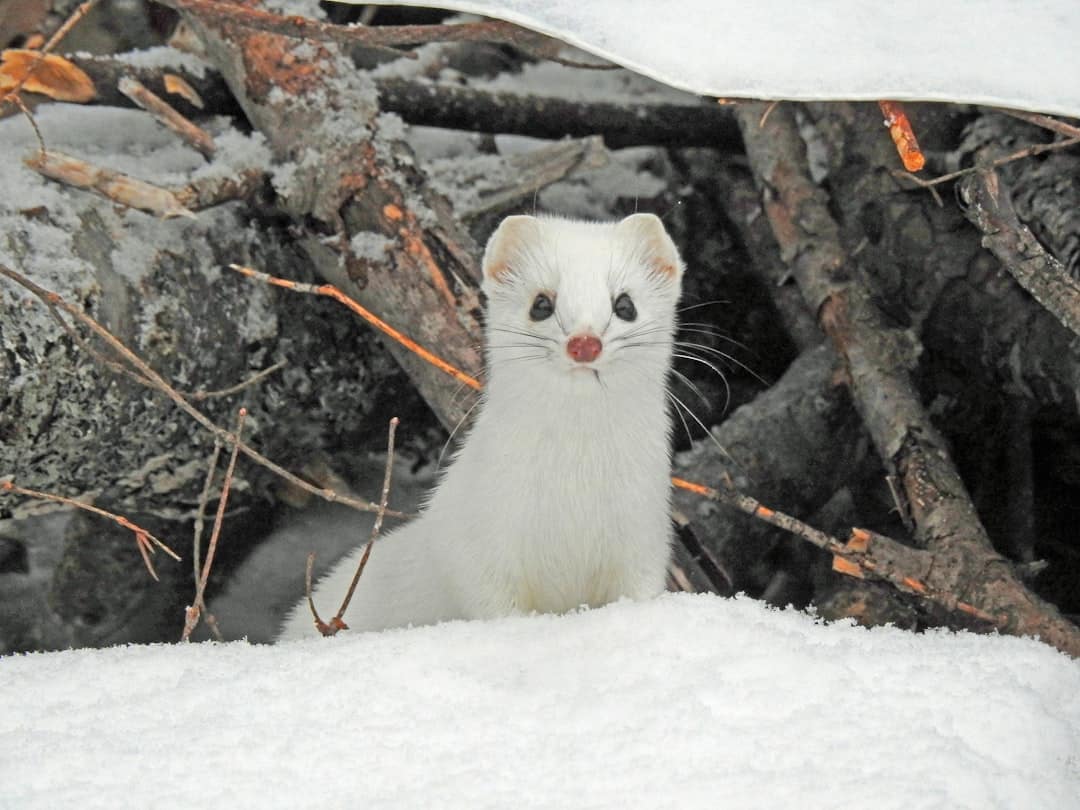Welcome, fellow outdoor enthusiasts and small creature admirers!
Have you ever peered out at your backyard and seen a tiny, quick-moving creature darting through the grass? A flash of brown, a hint of a long body, and then…gone. Perhaps, you were wondering whether this creature was a mouse, or something else…
Could it be… a weasel?
Indeed, our world is filled with such wondrous varieties of wildlife that sometimes it can be challenging to identify who our little visitors are.
Weasels are one of these often-misunderstood creatures. Small, ferocious, and fascinatingly adaptable, our countryside would not be the same without them. Yet many folks have trouble differentiating these swift critters from other similar species.
That’s where the beauty of understanding nature and its diverse creatures come in.
Identification can elicit a deep respect and awareness for these creatures’ vital roles in our ecosystems. It connects us more deeply to the land we live on and share with them.
So let’s embark on this journey together…
It’s time to delve into the fascinating world of Weasels!
Building a deeper understanding and appreciation for nature often starts with exploring the creatures that live in our backyards. One such fascinating creature is the weasel, a small but mighty predator in the animal kingdom. This guide will delve into identifying the different species of weasels and share intriguing facts, discoveries, and observations about these captivating creatures.
Unveiling the world of weasels
Despite their small size, weasels play a significant role in maintaining balance in the ecosystem by controlling rodent populations. Their diminutive stature also allows them to enter burrows in pursuit of prey, a unique hunting method amongst their kind.
Weasels they have an elongated body, long neck, small head, and short legs — a design perfectly suited for their predatory lifestyle.
Identifying different species of weasels
According to the International Union for Conservation of Nature, there are 17 species of weasels. Some of the most common include the least weasel, the long-tailed weasel, and the stoat (or short-tailed weasel).
- The least weasel: As suggested by its name, this is the smallest species. They are known for their all-white winter coat which helps them blend into snowy environments.
- The long-tailed weasel: This species has a significantly longer tail adorned with a black tip. They are also larger than their least cousins.
- The stoat: Stoats have a black-tipped tail like the long-tailed weasel but are smaller in size. In winter, their coat turns white except for the black tail tip.
Observing these physical differences can help you identify the species if you spot a weasel in the wild. It’s also worth noting that their coats change colour with the seasons, which they use for camouflage.
Nurturing a coexistence with weasels
As weasels are carnivorous, they can be beneficial to outdoor enthusiasts who want to naturally control pests like rats and mice. However, they might also pose a threat to small pets or poultry. Therefore, it’s crucial to create a balance where possible.
- Provide suitable habitat: Leave some areas of your garden wild. Scrubby areas, log piles and long grass provide cover for weasels and their prey.
- Be vigilant with pets: Keep a close eye on pets and poultry when they’re outside, especially if you’ve seen weasels in the area.
- Consider deterrents: If weasels pose a risk to your animals, consider natural deterrents like fencing or scent-markers.
FAQs about weasels
Q: Are weasels nocturnal?
A: Weasels are primarily nocturnal but are often active during the day as well, especially when there is little human activity around.
Q: What do weasels eat?
A: Weasels are carnivorous and their diet mainly consists of small mammals like mice, rats, and rabbits. However, they also eat birds, eggs, and insects.
Q: How can I encourage weasels into my garden?
A: Leaving areas of your garden wild and providing habitats like log piles can attract weasels. They are also attracted to gardens with a good supply of rodents.
Embracing the beauty of nature means acknowledging and respecting all its inhabitants, weasels included. By understanding these creatures, we can appreciate their role in our local ecosystems and learn to coexist harmoniously with them.
Over the course of this article, we have covered a detailed guide on identifying weasel species. We have delved into their physical characteristics, habitats, and behaviors.
We have discovered that weasels are not just fascinating but also play a crucial role in the ecosystem. They keep the rodent population in check, thus maintaining a healthy balance in nature.
Have you enjoyed exploring the fascinating world of weasels as much as I did?
If this article has sparked your interest in our nimble friends, please feel free to share it with other outdoor living enthusiasts. Sharing the knowledge about these little creatures will certainly help to appreciate their role in our environment, and may inspire others to learn more about wildlife.
Remember, there is always more to learn about our natural world. So, do come back soon for more insightful discoveries and intriguing explorations into the realm of outdoor living!












